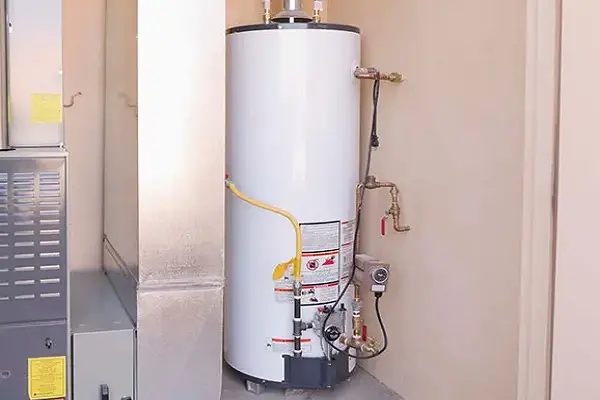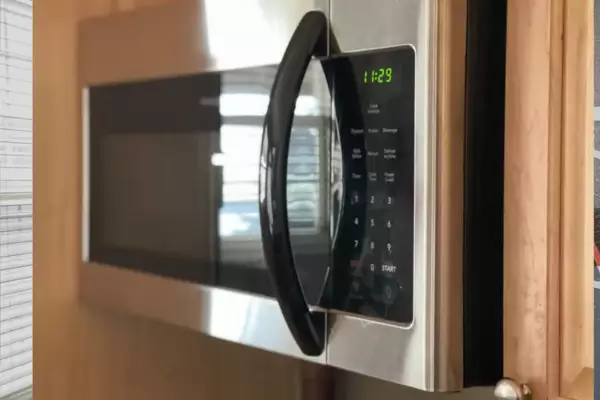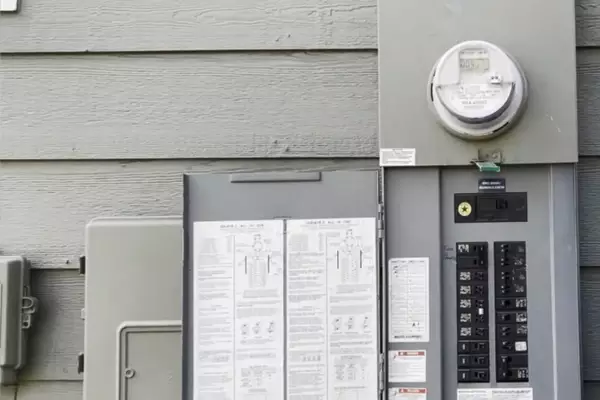Identifying the correct circuit breaker for any device is essential, especially when dealing with crucial household equipment like hot water heaters. Knowing which breaker corresponds to your hot water heater can help maintain its operation and prevent potential malfunctions.
One of the most common issues homeowners encounter is an unlabeled breaker panel. In such situations, deciphering which breaker controls the hot water heater can pose a daunting task. However, the identification process can be accomplished through a series of steps and techniques that ensure safety and accuracy.
A safe and functioning hot water heater is an integral part of any household. The circuit breaker responsible for this device plays a crucial role in its operation, ensuring an uninterrupted supply of hot water for your needs.
Contents
The Role of Circuit Breakers
Circuit Breakers: An Essential Safety Mechanism
Circuit breakers play an integral role in protecting your home from electrical malfunctions. They interrupt the flow of electricity when a fault is detected, protecting your appliances from damage.
Hot Water Heater and Circuit Breakers
For a hot water heater, the circuit breaker acts as a safeguard against power surges that could potentially harm the equipment. A breaker that is not working correctly could lead to a lack of hot water or even damage to the heater itself.

When Things Go Wrong
Knowing what signs to look for when your hot water heater starts to malfunction can help you respond more effectively to issues. A sudden lack of hot water is the most prominent indicator of a problem with your water heater, but there are other subtle signs you can look for.
Recognizing Water Heater Issues
The first sign you’ll likely encounter is a lack of hot water. If you turn on your tap or shower and only cold water flows, the hot water heater might have tripped. This happens when the breaker connected to the heater detects an electrical fault or surge, triggering an automatic shutdown to prevent damage to the heater and ensure your safety.
Another sign could be inconsistent hot water supply. If the water temperature fluctuates between hot and cold, it could mean that the breaker is partially tripped or is failing. Overheating of the water heater is also a sign that your breaker might not be functioning correctly. If the heater or the water gets unusually hot, it might be due to a faulty thermostat or an electrical issue that’s causing the breaker to malfunction.
The Impact of a Tripped Breaker
When a breaker trips, it shuts off the power supply to the appliance it is connected to. In this case, your water heater will lose its power source, leading to an immediate disruption of hot water supply. Repeated tripping can also cause wear and tear on your water heater and may lead to more severe problems over time.
Hot Water Heater Breaker Not Labeled
Facing an unlabeled breaker panel can make the process of identifying the correct breaker for your hot water heater challenging. However, there are practical methods that can help you decipher this puzzle without risking your safety.
The Problem of Unmarked Breakers
In many homes, breaker panels might not be labeled, or the labels might have faded over time, making it difficult to identify which breaker corresponds to which appliance. This can be a problem when you’re trying to locate the breaker for your hot water heater, especially during a malfunction.
Techniques for Identifying the Correct Breaker
Despite the challenge, several techniques can help you identify the right breaker for your hot water heater. A visual inspection is the most straightforward method. Check if the breaker is tripped or in the off position. The tripped breaker might be the one connected to your hot water heater.
Another common technique is the process of elimination. If you can identify other appliances and their corresponding breakers, the unaccounted one might be the one connected to your hot water heater.

Tracing the Hot Water Heater Circuit
If the techniques above don’t work, you might need to trace your hot water heater circuit. This method involves tracking the path of the electrical wiring from the heater to the breaker panel.
Safe Steps to Track Electrical Circuits
When tracing an electrical circuit, it’s essential to follow safe procedures. Begin by turning off all electrical appliances in your home to ensure that there’s no electrical flow that could cause accidents.
You should then gradually turn on the appliances one by one, checking the breaker panel each time. The breaker that powers on with the appliance is the one connected to it. Ensure you keep track of all breakers to avoid confusion.
How to Identify the Water Heater Breaker
After you’ve identified all the other breakers, the remaining one is likely connected to your hot water heater. Another method involves listening for a click from the breaker panel when the heater switches on. This click signifies the breaker connected to the heater.
The Flipping Technique
When other techniques fail, or if you want a sure way to identify the breaker connected to your water heater, you can use the flipping technique. This involves systematically switching off each breaker and checking whether the hot water heater shuts down.
How the Flipping Technique Works
The flipping technique works best when the hot water heater is actively heating water. This is because the active heating process will immediately stop once you flip the right breaker, providing an accurate indication of which breaker is connected to the heater.
Start by flipping each breaker off one by one, while frequently checking whether the hot water heater has shut down. This process might be time-consuming, but it’s quite effective.
Practical Steps to Implement the Technique
Before you start the flipping process, ensure that the hot water heater is actively heating water. You can do this by running hot water from a tap or shower until the heater kicks in.
Next, flip each breaker off, one by one. Check the hot water flow after each flip. Once you find that the hot water has turned cold, you’ve likely located the correct breaker. Be sure to return all other breakers to their original positions after you’ve finished.

How to Tell if Water Heater Breaker is Off
If your hot water heater isn’t functioning correctly, the breaker might be off. There are several signs you can look for to confirm this.
Signs that Your Water Heater Breaker is Off
One of the most evident signs that your water heater breaker is off is a lack of hot water. If the water heater isn’t making any noise or showing any sign of activity, such as the heating element glowing, these could also be signs that the breaker is off.
Inspecting the breaker panel is another way to check. If the breaker connected to your water heater is in the ‘Off’ position or is halfway between ‘On’ and ‘Off’ (indicating a tripped breaker), this means your water heater breaker is off.
Restoring Power to the Water Heater
Restoring power to your water heater is straightforward. Locate the correct breaker on the panel and flip it back to the ‘On’ position. This action should restore power to your water heater, and it should resume its normal operation.
However, if the breaker trips again soon after you’ve restored power, it’s advisable to call a professional electrician, as this could be a sign of a more serious electrical issue.
Other Helpful Tools and Techniques
The process of locating the right breaker for your hot water heater might be challenging, especially with an unlabeled breaker panel. However, there are tools and techniques available that can simplify this process.
Using Circuit Breaker Finders
A circuit breaker finder is a tool that can help you track the right breaker without having to manually flip each one.
The Value of Labeling Your Breakers
Once you’ve identified your hot water heater’s breaker, take the time to label it. This will save you time and effort in the future.
Precautions to Take
Safety Measures when Working with Electricity
Always prioritize safety when dealing with electricity. Never touch the panel with wet hands, and consider wearing rubber gloves and shoes for added protection.
When to Consult a Professional
If you’re unsure about any step in the process or if your efforts do not resolve the issue, consult with a professional electrician.
Frequently Asked Questions
Can a Tripped Breaker Damage My Water Heater?
A tripped breaker itself doesn’t cause damage. However, repeated tripping may indicate a problem with the heater that needs to be addressed.
How Often Should the Water Heater Breaker Trip?
Ideally, your breaker should not trip often. If it does, it could be a sign of a bigger issue, like a malfunctioning water heater or an electrical issue.
How Can I Prevent My Water Heater Breaker from Tripping?
Ensure that your heater is not overloading the circuit and that it is in good working condition. Regular maintenance can also help prevent frequent breaker trips.
Conclusion
Knowing which circuit breaker corresponds to your hot water heater is essential for maintaining the device’s proper functioning. Unlabeled panels can pose a challenge, but several techniques can assist in accurately identifying the correct breaker.
The use of tools like circuit breaker finders, as well as methods such as the flipping technique, are practical ways of tracing your hot water heater circuit. Emphasis on safety measures is key when dealing with electricity, and it’s always a good idea to consult with a professional when in doubt.
In the end, understanding your home’s electrical system can contribute significantly to the smooth operation of essential appliances like your hot water heater. Knowledge, coupled with the right tools and techniques, can help ensure your hot water needs are never left out in the cold.

